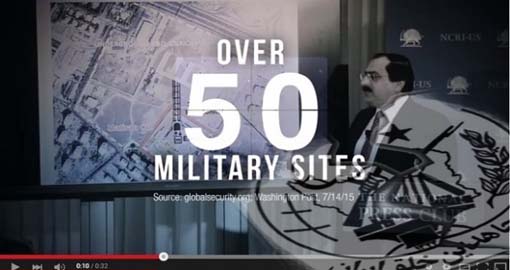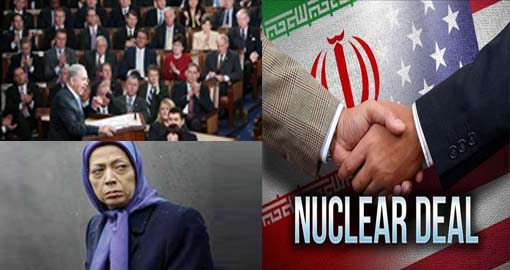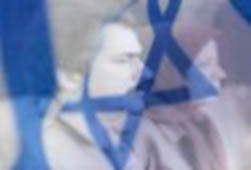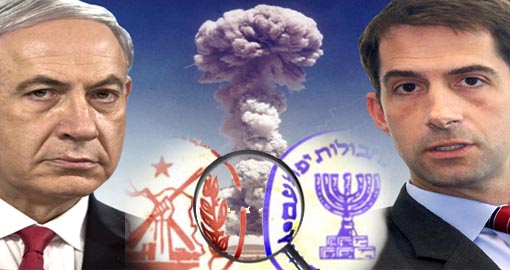When the American Israel Public Affairs Committee (AIPAC) declared war on the nuclear accord between Iran and world powers signed last week in Vienna, it put its money where its mouth is. AIPAC, Washington’s most influential pro-Israel lobby reporte dly plans on spending $20 million over the next two months urging Congress to vote against the deal. But its efforts at a full frontal attack on the accord, inked by the P5+1 (the US, China, France, Russia, the UK, and Germany) and Iran is leading to some politically awkward alliances.
dly plans on spending $20 million over the next two months urging Congress to vote against the deal. But its efforts at a full frontal attack on the accord, inked by the P5+1 (the US, China, France, Russia, the UK, and Germany) and Iran is leading to some politically awkward alliances.
As part of its efforts to kill the deal with a congressional vote, AIPAC launched a 501c4 advocacy group called Citizens For A Nuclear Free Iran. The group, according to The New York Times, was “formed with the sole mission of educating the public ‘about the dangers of the proposed Iran deal,’” said spokesman Patrick Dorton. The Times reported that the $20 million budget would go to ad buys in as many as 40 states as well as other advocacy.
Now that the campaign is taking shape, the AIPAC spin-off appears to be relying on a typical, if troubling, ally of American groups and individuals opposed to diplomacy with Iran. Namely, two items on the website of Citizens for a Nuclear Iran, one of which was later removed, featured an exiled Iranian opposition group called the Mojahedin-e Khalq (MEK).
The MEK makes a cameo appearance in the television ad crafted by Citizens For a Nuclear Free Iran, the well-financed AIPAC spin-off, as well as on a now-removed news items on the group’s “Press Room” webpage—indicating that Nuclear Free Iran recognized a PR misstep by promoting the group.
MEK Footage in TV Ad
The ad Citizens For a Nuclear Free Iran is splashing across television screens the country over—which the group posted to YouTube on Friday—incorporates b-roll footage from a press conference held by the National Council of Resistance of Iran (NCRI), which the State Department deemed the MEK’s “political wing” (earning it a corresponding terrorist designation).
The footage in the Nuclear Free Iran ad shows Alireza Jafarzadeh, a longtime Washington-based MEK apparatchik, at the National Press Club using a pointer aimed at a satellite photograph. It’s not clear which press conference the footage is taken from (the MEK frequently holds these sorts of events). As Jafarzadeh gestures at the photograph, the slickly produced ad’s voiceover says, “Military sites can go uninspected” and the words “Over 50 military sites” flash onto the screen.
“We were not aware of this matter, though the statements and b-roll footage are in the public domain,” said Ali Safavi, who works with the NCRI, when asked about the commercial.
The MEK’s most prominent act since the 1981 bombing of Iran’s Islamic Republic Party headquarters—killing 73 party officials—was its 2002 public exposure of the Natanz uranium enrichment facility and Arak heavy water production plant for plutonium extraction. Although the MEK claimed its clandestine network in Iran had unearthed the nuclear facilities, The New Yorker reported in 2006 that Israeli intelligence had passed the information about the sites to the MEK.
Since exposing Natanz and Arak, the MEK has periodically drummed up publicity for other purported blockbuster revelations; many turn out to be busts. This winter, as nuclear talks with Iran talks heated up, the MEK released a report they claimed exposed a secret Iranian enrichment facility. The report garnered much credulous press from right-wing media and even a mainstream outlet or two. But a blogger at the liberal site Daily Kos quickly noticed that the photograph the MEK claimed was a steel door to the secret facility had been ripped from the public website of an Iranian company that sells safes.
According to the Sunlight Foundation’s Political Ad Sleuth project, Citizens United for a Nuclear Free Iran has already inked 247 contracts to air the aid, some of which went into effect last Friday.
Promoting MEK’s Leadership Views on Iran Deal
Citizens for a Nuclear Free Iran’s dalliance with the MEK, however, didn’t end at drawing footage from one of the opposition group’s press conferences. In the “Press Room” section of Nuclear Free Iran’s website, the group late last week reprinted an item from the right-wing Israeli news organization Arutz Sheva that promoted the MEK’s views on the nuclear deal.
(Screencaps can be viewed here and here.)
The Arutz Sheva piece is headlined “Iranian Opposition Leader in Exile: Deal Bad for Iranian People”—a headline that carries over to the Citizens for a Nuclear Free Iran website—and paraphrases quotes from an interview with Maryam Rajavi, the co-leader of the MEK (her husband, Massoud, the other co-leader, has not been seen publicly in a dozen years). In the interview, according to Arutz Sheva, Rajavi condemned the deal and, in the words of the pro-settler news outlet, “called on the international community to work to replace the Islamic religious regime in Iran.”
On Sunday, Citizens for a Nuclear Free Iran pulled the Rajavi article from its “Press Room” page. No explanation was given, and a query on the issue to Citizens for a Nuclear Free Iran went unanswered.
New Group’s Advisor Backs MEK
Pulling the article from its website may indicate that Nuclear Free Iran realized the potential public relations problems associating the group with the MEK could bring.
With bizarre Islamo-Marxist guerrilla roots, the MEK and its affiliates were listed as terrorists by the US State Department thanks to years of violence, including attacks against Americans and the Shah’s government in Iran in the 1970s and, after falling out of favor with Iran’s revolutionary clerics, the Islamic Republic. But the designation was lifted in 2012 as part of a deal to try to extricate remaining MEK members from peril in Iraq, where the group had fought alongside Saddam Hussein but was disarmed in the 2003 American invasion.
The MEK’s multi-million dollar lobbying campaign to get removed from the terror rolls gave it a newfound prominence in Washington. Its ardent anti-Iranian regime stance, robust lobbying operations and hefty political donations have kept up their favorable relations with many hawks on Capitol Hill—despite the group’s reputation for cult-like behavior and past human rights abuses against its own members. (For more background, see our February feature in The Intercept on the MEK’s history and influence in Washington.) Rajavi and her followers use their contacts in Washington to relentlessly push for overthrowing the Iranian regime—and making this goal official US policy.
Rajavi counts among her supporters one of Citizens for a Nuclear Free Iran’s advisory board members: former Democrat and former senator Joe Lieberman. Lieberman has made several appearances at MEK events, including this June when he appeared at a MEK confab in Paris. Lieberman told the audience there that the US “should be working closely with your resistance group”—making, in other words, regime change into an official US policy.
A spokesman for Citizens for a Nuclear Free Iran did not respond to request for comment about whether it supported an American policy of regime change in Iran.
by Eli Clifton and Ali Gharib



